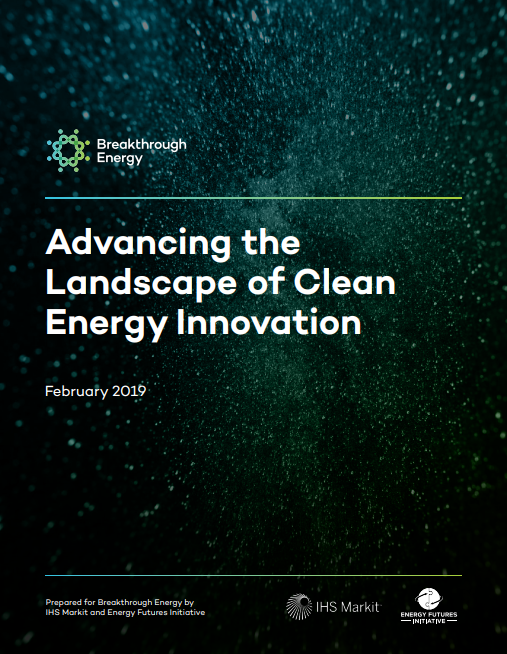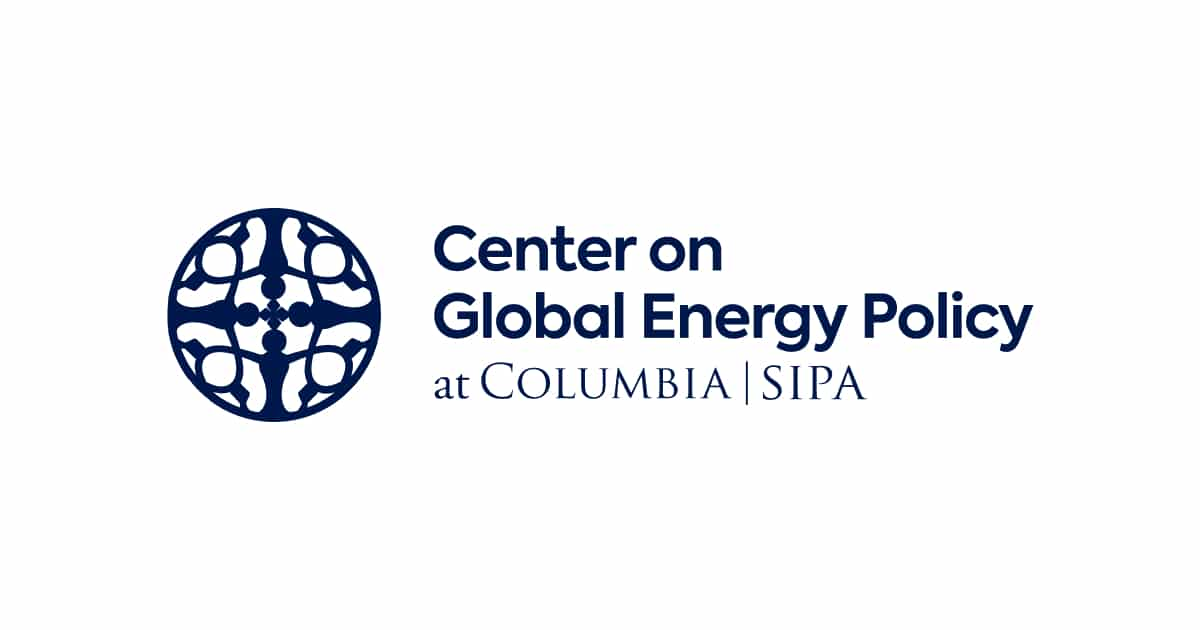It evaluates opportunities for public and private investment in the U.S. to encourage the development of reliable, low-emission energy technologies. Furthermore, it underscores the urgent need to transition to a lower carbon future. This transition can be achieved by fostering collaboration throughout the energy innovation chain, from basic research to deployment. Commissioned by Breakthrough Energy and authored by IHS Markit and Energy Futures Initiative, the report emphasizes the need for market and policy environments to support the transition to cleaner energy sources. Moreover, it identifies investment opportunities and provides a roadmap for introducing low-emission energy technologies. Ultimately, the report aims to position the U.S. at the forefront of the global energy transition towards sustainability and climate resilience.
Overview
Chapter 1: Framing the Clean Energy Innovation Discussion
Establishes the foundation for the discussion on clean energy innovation. Firstly, it provides context on the current landscape. Following this, it outlines key drivers and barriers. Most importantly, it highlights the transformative potential of innovative clean energy technologies, setting the stage for a comprehensive discussion.
- Importance of Innovation: Emphazises innovation’s critical role in advancing clean energy technologies and addressing environmental challenges. It may highlight how innovation can drive efficiency improvements, cost reductions, and the development of new solutions in the energy sector.
- Policy Landscape: Discusses the policy landscape for clean energy innovation, including government initiatives and incentives for sustainable technology research. Explores how policy affects innovation and market adoption of clean energy solutions.
- Collaboration and Stakeholder Engagement: Underscores the need for collaboration among stakeholders like government agencies, industry players, research institutions, and nonprofits for clean energy innovation. This includes how partnerships and knowledge-sharing can speed up progress in creating and implementing clean energy technologies.
- Research and Development: Highlights the importance of R&D for clean energy innovation and the necessity of continuous investment for technological advancements and tackling scalability, efficiency, and cost-effectiveness issues.
- Economic and Environmental Impacts: Examines the economic benefits of clean energy innovation, such as job creation and economic growth. It also considers the environmental impact of cleaner energy, including lower greenhouse gas emissions and better air quality.
Chapter 2: The Private-Sector Role in Clean Energy Innovation
Centers around the private sector’s significant role in propelling clean energy innovation. A thorough overview details the private sector’s pivotal role in promoting clean energy innovation. It emphasizes the contributions, challenges, and opportunities presented for private sector involvement in spearheading the shift towards a more sustainable energy future.
- Private Sector Investment: Discusses the role of private sector investors like small businesses, corporations, venture firms, and institutional investors in clean energy innovation, emphasizing their crucial support in developing and deploying these technologies.
- Investment Trends: Provides insights into investment trends in clean energy innovation, including the sectors attracting the most investment, the stages of innovation that private investors typically support, and the investment scales involved.
- Innovation Ecosystem: Explores how the private sector contributes to the broader innovation ecosystem in the energy sector. It may discuss the roles of private companies in research, technology development, commercialization, and adoption of clean energy solutions.
- Challenges and Opportunities: Addresses the challenges faced by private sector investors in clean energy innovation, such as regulatory uncertainties, market risks, and technology barriers. It also highlights opportunities for collaboration and growth in the clean energy market.
- Comparative Analysis: Compares private sector investments in clean energy innovation in the United States with those in other countries or regions. It may provide insights into how different investment strategies and policies impact the pace of innovation and market competitiveness.
Chapter 3: Focusing the Energy Innovation Portfolio on Breakthrough Potential
Provides a comprehensive overview of the private sector’s pivotal role in advancing clean energy innovation, emphasizing its significant contributions, inherent challenges, and unique opportunities. Specifically, this focus zeroes in on the potential for remarkable breakthroughs in the energy innovation portfolio, a crucial aspect for facilitating the much-needed transition towards a more sustainable energy future.
- Identification of Breakthrough Technologies: Introduces emerging clean energy technologies with breakthrough potential, including advancements in storage, battery, nuclear, hydrogen, manufacturing, building energy, grid modernization, smart cities, carbon management and capture, sunlight to fuels, and biological sequestration.
- Technology Continuum: Discusses how these breakthrough technologies are mapped onto a near–, intermediate–, and long-term continuum based on their development stages. The mapping reflects the timeframe in which efforts invested today can be expected to yield mature contributions in the future.
- Selection Criteria: Outlines the criteria for screening and identifying technologies with high breakthrough potential. These criteria include technical merit, market viability, compatibility, and consumer value, ensuring that the selected technologies have the potential to impact the clean energy landscape significantly.
- Research and Development Focus: Emphasizes the importance of investing in research and development across a broad range of breakthrough technologies to drive transformational innovation in the energy sector. It may advocate for a diversified portfolio structure that supports innovation across different time scales and technology domains.
Chapter 4: The Role of the Federal Government in the Energy Innovation Ecosystem
Examines the federal government’s role in the energy innovation ecosystem. This chapter offers insights into how the federal government, especially through agencies like the DOE, plays a vital role in promoting clean energy innovation, supporting research and development, and shaping a more sustainable energy landscape.
- Federal Clean Energy Research and Development (RDD&D) Portfolio: Discusses the scale, scope, and balance of the federal government’s RDD&D portfolio. It may highlight the significant contributions of federal funding to research, development, demonstration, and deployment of clean energy technologies.
- Successes and Impact: Outlines past successes of the federal government’s involvement in clean energy innovation, emphasizing how federal initiatives have shaped the nation’s energy system and contributed to technological advancements in the sector.
- Department of Energy (DOE) Focus: Focuses on the role of the Department of Energy (DOE) as a key player in federal clean energy research and development. It may discuss DOE’s funding allocation, organizational structure, and programs to advance clean energy technologies.
- Alternative Programs and Organizational Structures: Analyzes potential alternatives for improving federal contributions to energy transformation, suggesting strategies to optimize investments, stimulate innovation, and bolster public-private partnerships in the clean energy sector.
Chapter 5: The Role of State, Local, and Tribal Governments in Clean Energy Innovation
Underscores the essential role of state, local, and tribal governments in advancing clean energy innovation. It outlines their duties in enacting supportive policies, nurturing market development, and working with federal agencies and private sector stakeholders to hasten the shift towards a more sustainable energy future.
- Clean Energy Policy and Regulation: Discusses how governments implement policies and incentives to promote renewable energy and energy efficiency, focusing on creating a supportive environment for clean energy innovation.
- Market Development: Investigates how government initiatives like clean energy portfolio standards, zero-emissions credits, and financing mechanisms aid clean energy market development. It may also discuss how these interventions stimulate investment and innovation in this sector.
- Collaboration and Best Practices: Highlights the necessity of state collaboration in identifying and sharing clean energy best practices while discussing the role of standardization, consumer protection, and financing in fueling local and regional clean energy innovation.
- Technical Assistance and Funding: Calls for more federal support in funding, capacity building, and technical aid for local government clean energy initiatives and infrastructure projects to hasten the deployment of clean energy technologies.
- Innovative Financing: Suggests innovative financing methods like altering DOE loan rules or introducing tribal energy loan guarantees to boost investment in state and tribal clean energy projects. Discusses Green Banks’ role in state-level clean energy financing.
Chapter 6: Fostering Regional Clean Energy Innovation Ecosystems
Examines the importance of promoting regional clean energy innovation ecosystems. This chapter offers insights into the varied regional landscape of clean energy innovation in the United States. It emphasizes the need to nurture regional innovation ecosystems, utilize regional strengths, and encourage collaboration. These steps are crucial for driving sustainable energy transitions and economic development at the regional level.
- Regional Energy Profiles: Discusses how energy resources, infrastructure, and employment profiles vary significantly by region in the United States. It may highlight the importance of understanding regional differences in energy needs and opportunities to effectively tailor clean energy innovation strategies.
- Key Features of Regional Innovation Ecosystems: Explores the key features of regional innovation ecosystems in the clean energy sector, including the presence of research institutions, industry clusters, workforce capabilities, policy frameworks, and market dynamics. The section may emphasize the role of regional strengths and assets in driving innovation.
- Impact of Regional Ecosystems: Examines the impact of regional innovation ecosystems on clean energy development and deployment. It may discuss how regional collaborations, partnerships, and initiatives accelerate innovation, create jobs, and foster economic growth in clean energy sectors.
- Incentives for Innovation: Discusses incentives that can encourage the broader distribution of regional clean energy innovation ecosystems. It may explore policy measures, funding mechanisms, and collaborative efforts that support innovation clusters and promote the exchange of knowledge and best practices across regions.
- Regional Collaboration: Highlights the importance of regional collaboration among stakeholders, including government agencies, research institutions, industry partners, and community organizations. It may advocate for coordinated efforts to address regional energy challenges and capitalize on clean energy opportunities.
Chapter 7: Mobilizing Increased Private Sector Investment in Energy Innovation
Emphasizes the mobilization of increased private sector investment in energy innovation. It addresses the significance of such investment, navigation of fiscal policies and budget considerations, utilization of tax incentives, and creating opportunities for enhanced funding to propel the development and deployment of clean energy solutions.
- Importance of Private Sector Investment: Highlights the private sector’s vital role in energy innovation, commercialization of clean technologies, and scaling sustainable solutions. It might emphasize the need for more private funding to hasten the shift to a clean energy economy.
- Impact of Fiscal Policy and Budget Cuts: Discusses fiscal policy’s impact, budget cuts, and legislative changes on clean energy funding. It may analyze how policy decisions like tax incentives, regulatory frameworks, and budget allocations influence private-sector energy innovation investment.
- Tax Cuts and Jobs Act of 2017: Analyzes the impact of the 2017 Tax Cuts and Jobs Act (TCJA) on clean energy innovation funding, particularly how alterations in tax policies and incentives influence clean energy investments.
- Opportunities for Investment Capital: Discusses how key capital providers can support clean energy technology adoption and diffusion, as well as strategies to attract private investors, venture capitalists, and financial institutions to fund innovative clean energy projects.
- 45Q Credits and Incentives: Explores the extended 45Q credits from the Balanced Budget Act, which boosts carbon capture, utilization, and sequestration projects. It may discuss how these incentives drive private investment in carbon management and aid emissions reduction.
Therefore. Nonetheless. However. Nevertheless. In conclusion. Henceforth. On the other hand. Hence. Furthermore. Therefore. Nonetheless. However. Nevertheless. In conclusion. Henceforth. On the other hand. Hence. Furthermore. Therefore. Nonetheless. However. Nevertheless. In conclusion. Henceforth. On the other hand. Hence. Furthermore.




